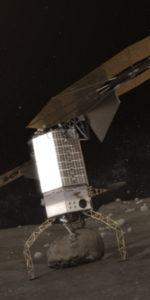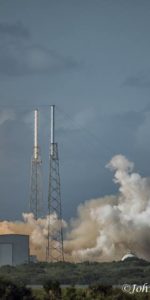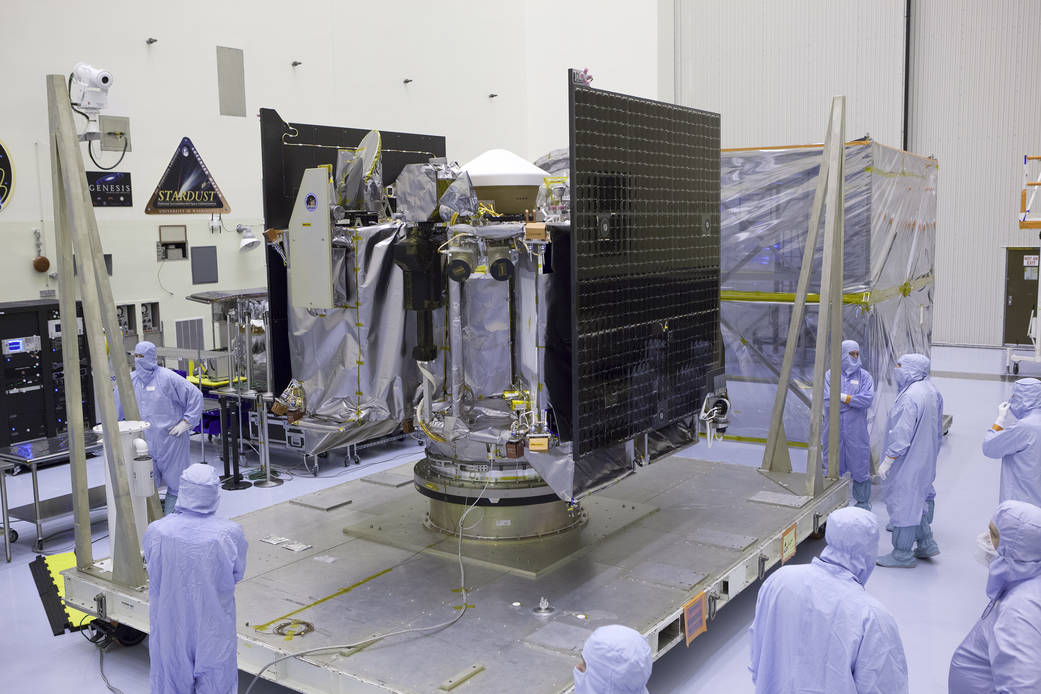
NASA’s first asteroid sampling spacecraft, OSIRIS-REx, arrived at the Kennedy Space Center in Florida on Friday, May 20. The spacecraft is set to undergo a series of tests and final preparations to ready it for a September launch to an asteroid, boosted from Earth atop a United Launch Alliance (ULA) Atlas V 411 rocket. At Kennedy, OSIRIS-Rex will be put through a spin test, solar array release test, electrical system testing, and propellant loading.
OSIRIS-REx, which is an acronym for Origins, Spectrial Interpretation, Resource Indentification, Security-Regolith Explorer, is set to launch Sept. 8 from Cape Canaveral Air Force Station Space Launch Complex (SLC)- 41. This unmanned mission to asteroid Bennu could provide answers regarding the formation of our Solar System and serve as a precursor for asteroid missions in the future. OSIRIS-REx will travel 509 million miles on a two-year journey to the carbon-rich, near-Earth asteroid Bennu where it will explore the surface before returning back to Earth with a sample for analysis. OSIRIS-REx will also explore Bennu’s physical and chemical properties, which is important to know in the event of an asteroid impact. Asteroid Bennu is a potentially hazardous asteroid with a relatively high chance of impacting our planet in the late 22nd century—another reason why Bennu was chosen for the mission.
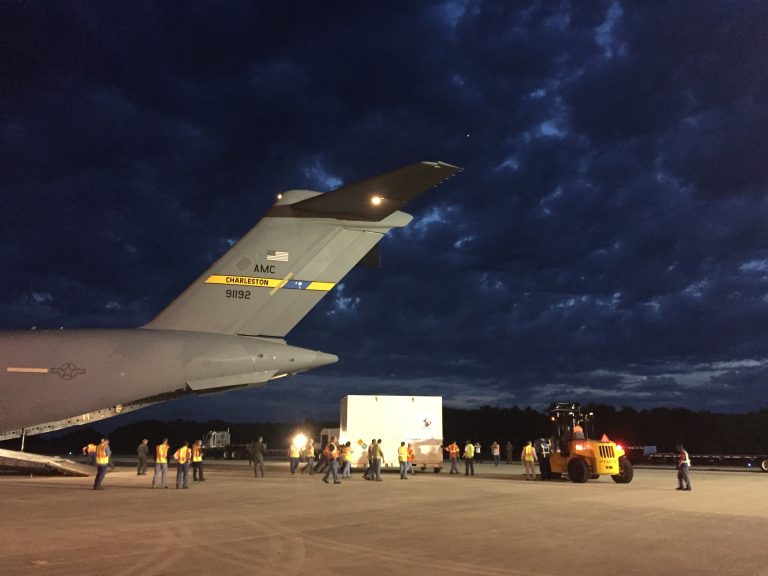
On May 20, the 1,980-lb (900-kg) spacecraft, built and tested by Lockheed Martin, was transported inside an environmentally controlled container on a U.S. Air Force cargo plane with 30 support personnel onboard. The aircraft took off from Buckler Air Force Base in Aurora, Colo., and traveled about 1600 miles to Florida’s Space Coast. The next time OSIRIS-REx flies, it will be launching off a rocket, but there is still a lot that needs to be accomplished.
“Delivering OSIRIS-REx to the launch site marks an important milestone, one that’s been many years in the making,” said Rich Kuhns, OSIRIS-REx program manager at Lockheed Martin Space Systems. “The spacecraft has undergone a rigorous environmental test program in Denver but we still have plenty of work ahead of us. Many on our team have temporarily moved to Florida so they can continue final processing and have the spacecraft ready for launch in three and a half months.”
Asteroids like Bennu have the potential to one day provide fuel for manned and robotic spacecraft to explore the Solar System. They contain precious metals and natural resources such as water and organics. OSIRIS-REx will obtain at least 60 grams (2.1 ounces) of regolith from Bennu to return to Earth for sample testing in 2023.
Over the weekend, a team removed OSIRIS-REx from its shipping container and into a cleanroom. The spacecraft was put through some post-launch inspections to confirm that it arrived in good condition and was ready to undergo the final pre-launch checks. Pre-launch checks for OSIRIS-REx also include software tests, instrument and power functional tests, spacecraft self-tests, and deployments of the spacecraft’s solar panels. So far, everything seems to be moving along smoothly.
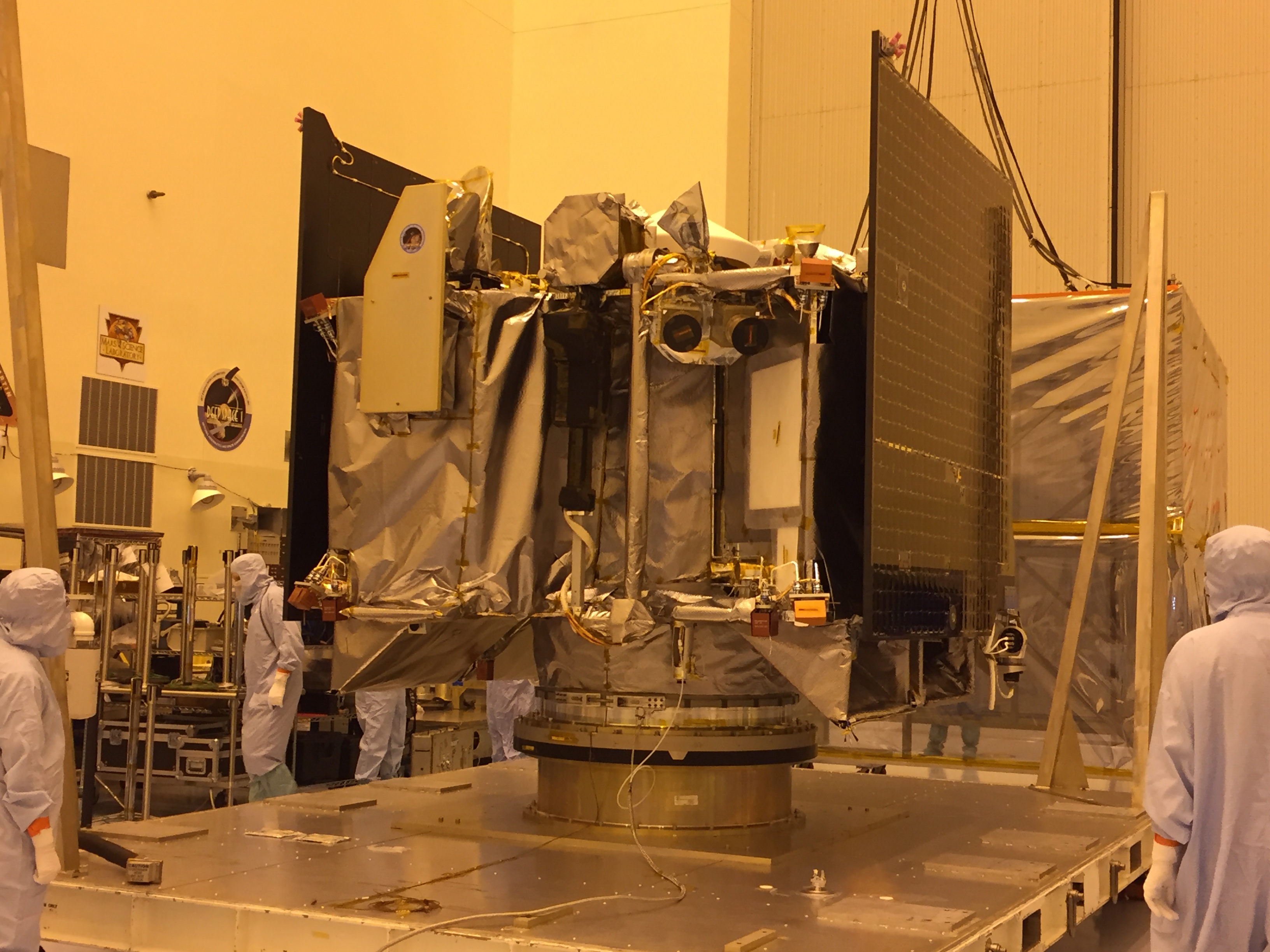
“This team has done a phenomenal job assembling and testing the spacecraft,” said Dante Lauretta, principal investigator for OSIRIS-REx at the University of Arizona, Tuscon. “As we begin the final preparations for launch, I am confident that this spacecraft is ready to perform its science operations at Bennu. And I can’t wait to fly it.”
OSIRIS-REx is the third mission in NASA’s New Frontiers Program, following in the footsteps of New Horizons mission to Pluto (July 2015) and Juno mission to Jupiter (July 2016). The New Frontiers Program designs medium-class spacecraft missions that perform high-quality scientific investigations to further our understanding of the Solar System. OSIRIS-REx is a high-science-return planetary mission with important science objectives:
- Return and analyze a sample of the asteroid’s regolith
- Map the asteroid
- Document the sample site
- Measure the orbit deviation caused by non-gravitational forces
- Compare observations at the asteroid to ground-based observations
The mission operations begin with launch off a ULA Atlas V rocket on Sept. 8, 2016. It will spend a year in orbit around the Sun before using Earth’s gravitational field to send it on its way to asteroid Bennu. OSIRIS-REx will begin its approach to Bennu in August 2018 and adjust itself to match the velocity of the asteroid. The spacecraft will begin taking a detailed survey of Bennu and continue doing so for about a year. During the survey, OSIRIS-REx will also map out potential sample sites. Once a sample site is chosen, the spacecraft will briefly touch the surface and retrieve a sample. For no longer than 5 seconds, the spacecraft’s sampling arm will make contact with the surface of Bennu and release a burst of nitrogen gas. This disturbance will stir up rocks and surface soil, which will then be captured in the sampler head of the spacecraft. There is enough nitrogen for three sampling attempts and to collect 60–2000 grams (2–70 ounces).
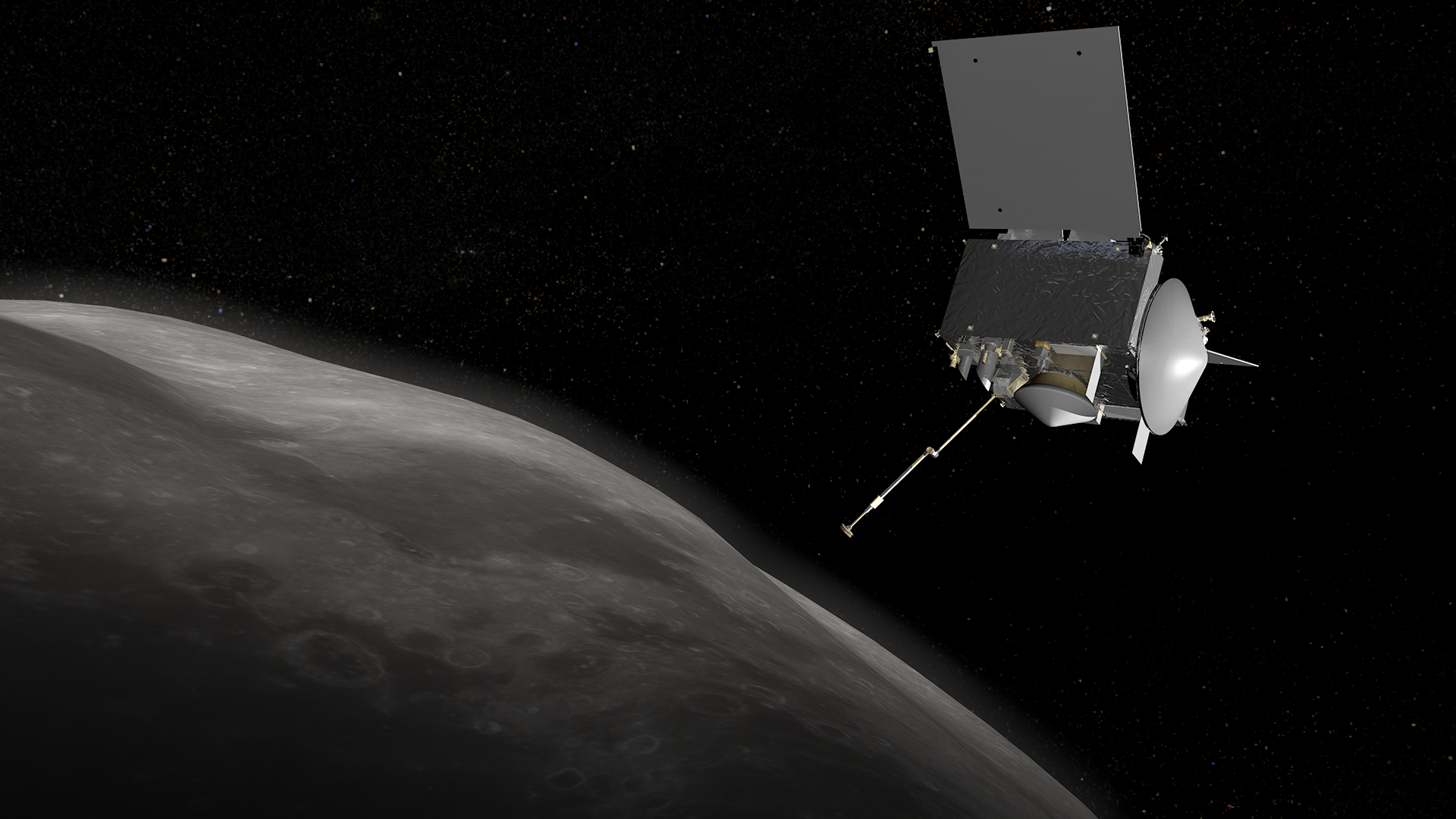
OSIRIS-REx will begin its journey back to Earth in March 2021, with arrival 2.5 years later. The sample return capsule will break off from the spacecraft, enter Earth’s atmosphere, and be collected at the Utah Test and Training Range. The science team will analyze and test the asteroid sample for two years (2023–2025), or however long is necessary to complete the mission science goals. At least 75 percent of the sample will be preserved at NASA’s Johnson Space Flight Center in Houston for further research.
Be sure to “Like” AmericaSpace on Facebook and follow us on Twitter: @AmericaSpace
.
Missions » OSIRIS-REx »



